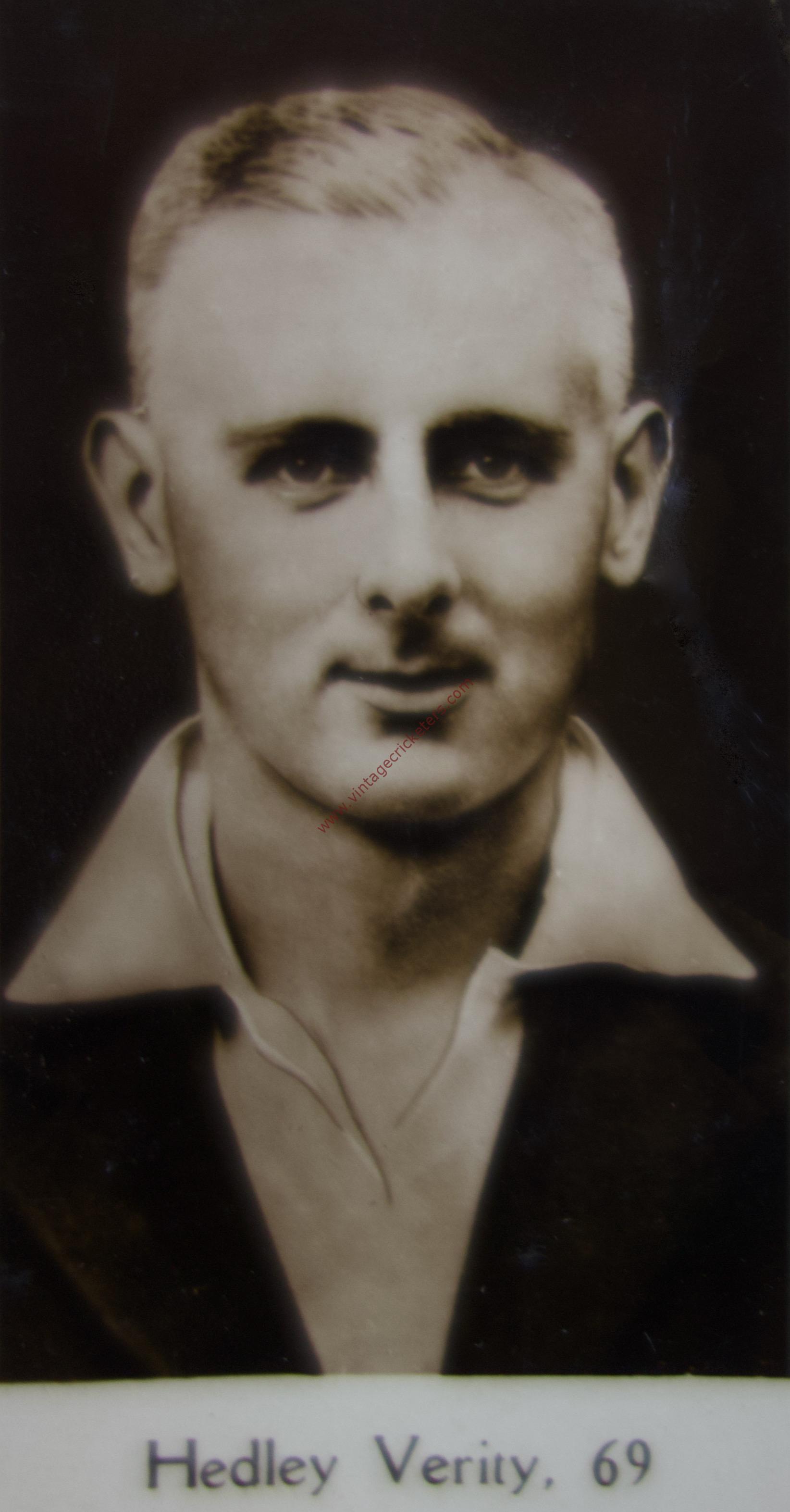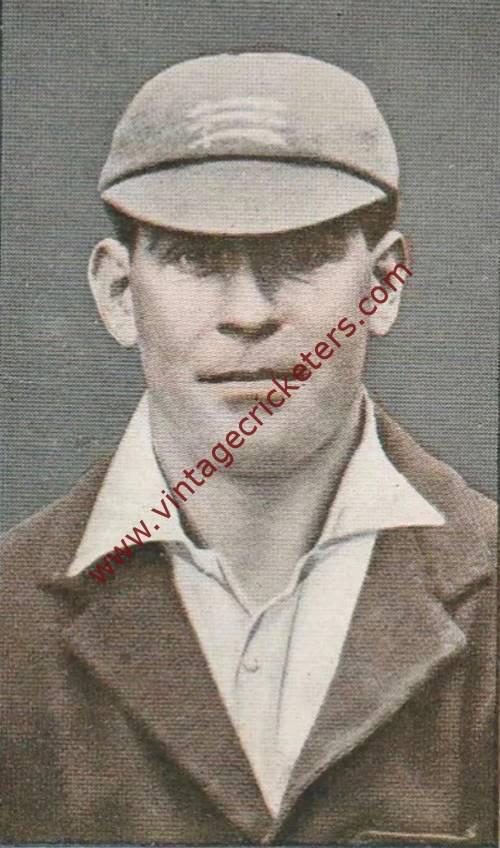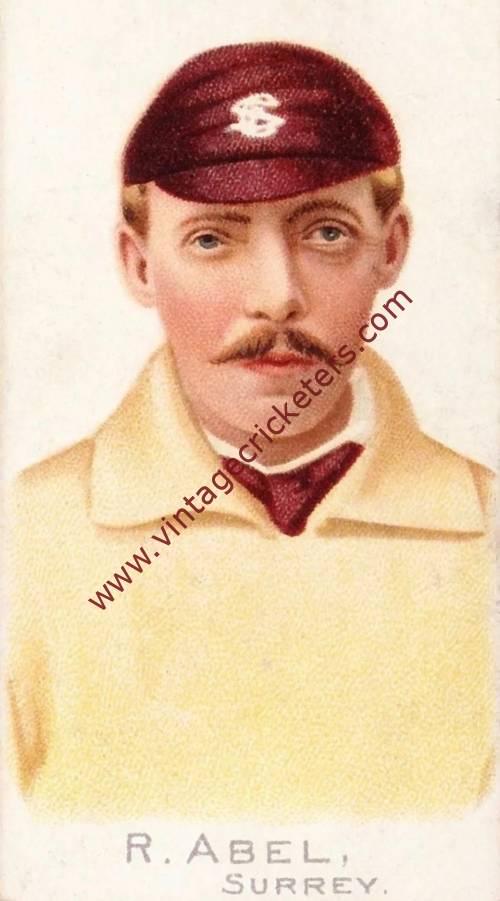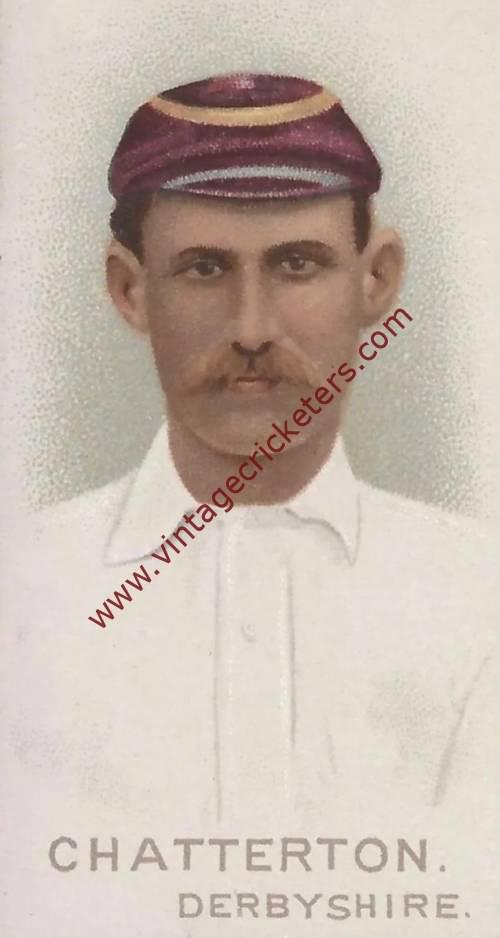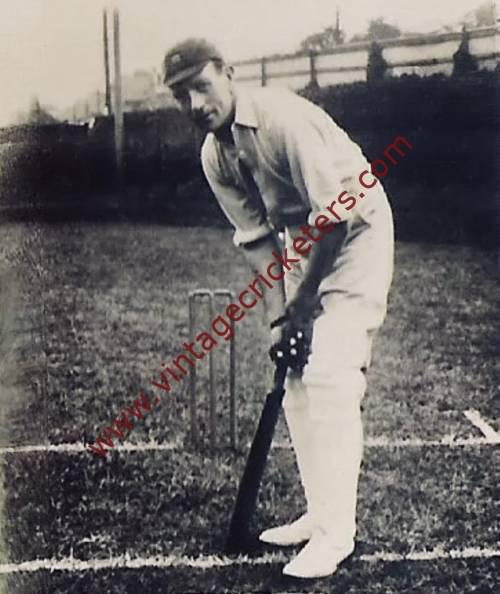Description
Headingley, Leeds, Yorkshire born Hedley Verity played for Yorkshire and England between 1930 and 1939. A slow left-arm orthodox bowler, he took 1,956 wickets in first class cricket at an average of 14.90 and 144 wickets in 40 Tests at an average of 24.37. Named as one of the Wisden Cricketers of the Year in 1932, he is regarded as one of the most effective slow left-arm bowlers to have played cricket. Never someone who spun the ball sharply, he achieved success through the accuracy of his bowling. On pitches which made batting difficult, particularly ones affected by rain, he could be almost impossible to bat against.
After establishing a good reputation in local cricket, he signed a contract as a professional cricketer playing for Accrington in the Lancashire League and for Middleton in the Central League. His first season was not a success but, after moving clubs, he began to make a name for himself. Initially a medium-paced bowler, he switched to bowling spin in an attempt to secure a place in the Yorkshire team. When Wilfred Rhodes, the incumbent Yorkshire left-arm spinner, announced his retirement, Verity had a successful trial in the team, making his County debut against Sussex in May 1930 already aged 25, and led the national bowling averages. His best performance came against Hampshire when he took 13 wickets for 83 runs, including 7-26 in the first innings.
In 1931, his first full season, he achieved the rare feat of taking all 10 wickets in an innings, against Warwickshire; the following year, he again took all 10 wickets, against Nottinghamshire, while conceding just 10 runs. The latter bowling figures remain a record in first class cricket for the fewest runs conceded while taking all 10 wickets, and included a hat-trick. Against Essex at Leyton, in 1933, he took 17 wickets in one day, a record shared only by Charlie Blythe and Tom Goddard.
He established himself as part of a strong bowling unit, which assisted Yorkshire to the County Championship seven times in his ten seasons with the club. In that time, Verity was never lower than fifth in the bowling averages and took over 150 wickets in every year except his first. In each of his nine full English seasons he took at least 150 wickets, and he averaged 185 wickets a season; three times consecutively (1935-36-37) he took over 200 wickets. His average ranged from 12.42 to 17.63. He headed the first-class English bowling averages in his first season (1930) and in his last (1939).
In 1931, he was chosen to play for England for the first time and rose to prominence during a tour to Australia in 1932-33. Afterwards, he played regularly for England and achieved the best performance of his career when he took 15 wickets against Australia in a Test match at Lord’s in 1934. However, critics claimed he was ineffective on good batting pitches, and he was occasionally left out of the England team over the following years. Even so, he had one of the best records of any bowler against Donald Bradman, generally regarded as the greatest batsman in the history of cricket. Verity took Bradman’s wicket more times than anyone else in Test matches, and Bradman greatly respected Verity as a bowler. He played in 40 Test matches, taking 144 wickets at 24.37 runs each. He took 100 wickets in Test cricket in a shorter period than any other English bowler. He is the only cricketer who has taken 14 wickets in a day in a Test match, this feat being performed against Australia at Lord’s in the second Test, 1934. During this match, he took 15 wickets for 104 runs, thus sharing with Wilfred Rhodes, his Yorkshire predecessor, the honour of taking most wickets in an England v. Australia match.
R. C. Robertson-Glasgow, a cricket writer and journalist, wrote “He is a scholarly bowler … He is tall, and much stronger than his pace needs. His run up, longer than most of his kind, has a measured delicacy that you would expect from this fastidious and nearly prim craftsman. Only his delivery has a grace which mathematics can’t explain.” Judged by any standard, Verity was a great bowler. Merely to watch him was to know that. The balance of the run up, the high ease of the left-handed action, the scrupulous length, the pensive variety, all proclaimed the master. He combined nature with art to a degree not equalled by any other English bowler of the time. As a bowler, Verity delivered the ball at almost medium pace, faster than usual for a spinner. His main asset was an ability to bowl straight and with great accuracy, on a good length. He could also make the ball bounce sharply.
Verity continued to play for Yorkshire and England until 1939, when the outbreak of the Second World War ended his career. Verity played his last match against Sussex. In the second innings, Verity took seven wickets for nine runs on a rain-affected pitch to bowl Sussex out for 33 and take Yorkshire to a win, although the match was played in a strained, tense atmosphere. This was Verity’s last performance in first class cricket. In total, he had taken 1,956 wickets at an average of 14.90 and scored 5,603 runs at 18.07.
As a batsman for Yorkshire, Verity was mostly a tail ender, but a useful one with a best score of 101 and 13 other half centuries including 3 at Test level, all not out scores, making 55 against India at Calcutta in January 1934, 60 against Australia at Old Trafford in July 1934, and 66 against India on the same ground in July 1936. In Test matches, his batting average was close on 21, in all cricket just over 18.
As a bowler, Hedley Verity stands with all his illustrious predecessors in the Yorkshire attack: Edmund Peate (1879-1887), Robert Peel (1882-1899), George Hirst (1891-1921), Wilfred Rhodes (1898-1930). Verity was not a slow left-hander in the accepted sense, and he used to reject comparision with Rhodes so far as method was concerned, saying: “both of us are left-handed and like taking wickets; let’s leave it at that.” In 378 first class matches he took 1,956 wickets at 14.90 apiece with an incredible 54 ten wicket matches and 164 five wicket innings.
Verity joined the Green Howards in 1939, and after training was posted overseas to India, Persia and Egypt, achieving the rank of captain. During the Allied invasion of Sicily in 1943, Verity was severely wounded and captured by the Germans. Taken to the Italian mainland, he died in Caserta from his injuries on 31st July 1943 aged 38 and was buried there.
When first class cricket resumed in 1945, Yorkshire staged a memorial match for Verity against Lancashire at Bradford Park Avenue, which resulted in a draw. Later, several Yorkshire players visited his grave; some members of the M.C.C. team under Len Hutton’s captaincy in 1954-55, including Hutton, journalists and former Yorkshire player Abe Waddington paid tribute there while en route for Australia.
Vintage Cricketers was founded in July 2019. There are more photographs of this cricketer in the Vintage Cricketers library, which are due to be loaded in due course. In the meantime, please send a message to us using the contact form at the bottom left of this page and we can arrange to prepare and publish all images of this cricketer if you have a particular interest in him.

